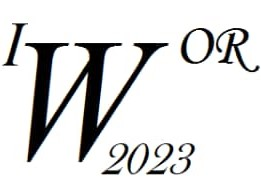Ponentes
Descripción
The Layered/columnar architecture of the neocortex is key to delivering higher-order brain function. The columnar dynamic of neural populations distributed in six-layers plays specific functional roles. Interlayer connectivity within the column and forward/backward adjacent columns governs the dynamical regime. Sensing the layer-specific activity mean field of the neural populations and such regimes is possible via invasive electrophysiology such as iEEG. We define the MEEG multilayer cortical source models following a novel BigBrain segmentation into seven boundaries enclosing the six columnar layers of the cortical histological space. MESI depends on registering the BigBrain pial and white boundaries to the FSAverage space via the volume-based and surface-based pipelines. Following: I) Interpolate the BigBrain five complementary boundaries onto FSAverage and FSAverage-individual spaces via 3D Hermite cubic splines between the pial and white boundaries. II) Defining layer-specific source models employing similar splines adjusted halfway between pairs of boundaries. III) Computation of layer-specific lead-fields or forward models via Brainstorm head-modeler and OpenMEEG BEM. IV) Computation of layer-specific inverse-solutions based on the Structured-Sparse-Bayesian-Learning incorporating connectivities of the columnar canonical circuit. MESI pipeline outputs for MRIs and MEGs of the HCP-MEG dataset were inspected visually. The MRI registration shows accurate BigBrain-like multilayer cortical segmentations and source models rendered for the FSAverage-individual space. We computed the SSBL inverse models and the cortical spectral topographies representing the MEG alpha-rhythm over source models. MESI extends previous Bayesian analyses of the MEG sensitivity to layer-specific activity based on local measurements of simultaneous iEEG/MEG and the dynamical model of a single column.

